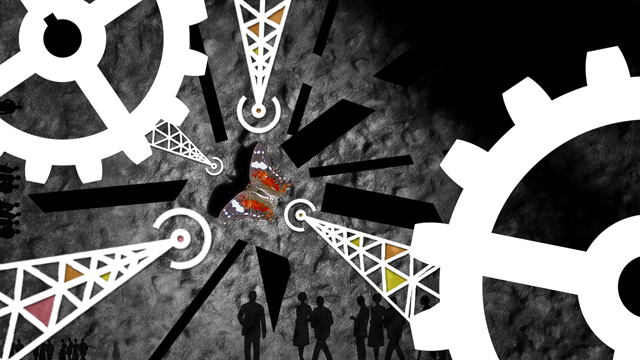The creation of meaning in television journalism: public health and the myth Roland Barthes
DOI:
https://doi.org/10.15448/1980-3729.2013.3.14071Keywords:
Jornal Nacional, Myth, Public health.Abstract
The image as a surface representing the world provides elements for the creation of the myth from the talks, selected in a socio-historical context and ideological. The myth, like speech, is so tied to the language you need this for your constitution. Roland Barthes argues that myth is a speech and this is the starting point of this article is to discuss the myth and its structures, using as examples reports on public health, conveyed in the Jornal Nacional (JN), Rede Globo, in 2011. The corpus of work considered 42 reports with a total of 133 minutes and 49 seconds. The result shows that the focus of the reports is predominantly negative. Overcrowding, long waiting, delay and lack of care, pilgrimage lines are selected by JN that help build the myth of the inefficiency of public health in the country.
Downloads
References
AZEVEDO, André Luiz. Rede pública oferece tratamentos a fumantes que queiram deixar o vício. Jornal Nacional, Rede Globo, Rio de Janeiro, 1 set. 2011.
BARTHES, Roland. Mitologias. 9. ed. Rio de Janeiro: Bertrand Brasil, 1993.
CAMPBELL, Joseph. As transformações do mito através do tempo. São Paulo: Cultrix, 1990.
CASSIRER, Ernst. Linguagem e mito. 4. ed. São Paulo: Perspectiva, 2003.
CASTILHO, Ataliba T. de. A língua falada no ensino de português. 6. ed. São Paulo: Contexto, 2004.
COELHO NETTO, Teixeira. Semiótica, informação e comunicação: diagrama da teoria do signo. São Paulo: Perspectiva, 2003.
ELIADE, Mircea. Mito e realidade. São Paulo: Perspectiva, 2010.
FLUSSER, Vilém. Filosofia da caixa preta: ensaios para uma futura filosofia da fotografia. Rio de Janeiro: Relume Dumará, 2002.
GUARESCHI, Pedrinho. A realidade da comunicação – visão geral do fenômeno (13-22). In: GUARESCHI, Pedrinho. Comunicação & Controle Social. Petrópolis: Vozes, 1993.
PINHEIRO, Neyara. Crianças que precisam de cirurgia no PI enfrentam fila de espera. Jornal Nacional, Rede Globo, Rio de Janeiro, 22 jul. 2011.
PORCELLO, Flávio; GADRET, Débora Lapa. A TV no Brasil: influência política e o discurso de poder. In: VIZEU, Alfredo; PORCELLO, Flávio; COUTINHO, Iluska (Orgs.). 60 anos de Telejornalismo no Brasil: história, análise e crítica. Florianópolis: Insular, 2010. p. 215-231.
SUZANNE, Carla. Superlotação é registrada em maternidades de Aracaju (SE). Jornal Nacional, Rede Globo, Rio de Janeiro, 16 abr. 2011.
VIZEU, Alfredo; CORREIA, João Carlos. A construção do real no telejornalismo: do lugar de segurança ao lugar de referência. In: VIZEU, Alfredo (Org.). A sociedade do telejornalismo. Petrópolis: Vozes, 2008. p. 11-28.
Downloads
Published
How to Cite
Issue
Section
License
Copyright
The submission of originals to Revista Famecos implies the transfer by the authors of the right for publication. Authors retain copyright and grant the journal right of first publication. If the authors wish to include the same data into another publication, they must cite Revista Famecos as the site of original publication.
Creative Commons License
Except where otherwise specified, material published in this journal is licensed under a Creative Commons Attribution 4.0 International license, which allows unrestricted use, distribution and reproduction in any medium, provided the original publication is correctly cited.






